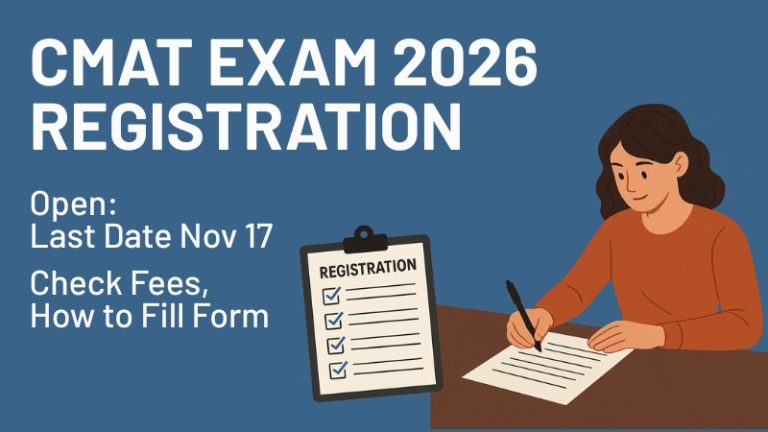Crack CAT DILR with expert strategies, time management tips, and proven practice methods. Learn how to select sets smartly, avoid common mistakes, and use the right resources to boost accuracy, speed, and confidence for a 95+ percentile score.
Cracking DILR in CAT: A Complete Strategy Guide for Aspirants

If one section has consistently baffled CAT aspirants over the years, it is Data Interpretation and Logical Reasoning (DILR). Unlike Quantitative Aptitude, which has a defined syllabus, or VARC, which relies on comprehension, DILR questions are unpredictable and unconventional. Many CAT toppers emphasize that mastering DILR is the real differentiator between a 95 percentile and a 99+ percentile.
This article explores strategies, practice methods, and test-taking techniques to help MBA aspirants tame the DILR section.
Understanding the DILR Section
Structure of DILR
- 20 questions divided into 4 sets of 5 questions each (sometimes 6–4–5–5)
- Each set is based on a caselet, puzzle, or data set.
Why DILR is Critical
- Highly unpredictable: CAT doesn’t follow a fixed pattern here.
- Requires logical stamina—solving 2–3 sets correctly can push the percentile sky-high.
- Filters out candidates who rely on rote learning.
Types of DILR Questions
Data Interpretation (DI)
- Tables, bar graphs, line charts, pie charts
- Caselets with real-world business scenarios
- Venn diagrams, percentage distributions
Logical Reasoning (LR)
- Arrangements (linear, circular, distribution-based)
- Binary logic (truth-tellers & liars)
- Games & tournaments
- Puzzles with conditions & constraints
Strategy to Tackle DILR
Step 1: Selection is Key
- Don’t attempt all sets. Identify 2–3 doable sets.
- Use the first 5 minutes to scan all sets before starting.
Step 2: Develop a Framework Approach
- For DI: Draw neat tables, simplify data, use approximation.
- For LR: Convert words into diagrams, charts, or logical tables.
Apply Now for MBA^/PGDM
Step 3: Practice Diverse Sets
The CAT Exam often introduces new puzzle types every year. Exposure to diverse problems builds adaptability.
Daily Study Routine for DILR
- 30 minutes: Solve 1 DILR set from past CAT papers.
- 30 minutes: Practice puzzles from coaching materials (Time, IMS, Career Launcher).
- 20 minutes: Speed calculation drills (percentages, ratios, approximations).
- 10 minutes: Error log—review why wrong answers occurred.
Common Mistakes in DILR
- Spending too long on one set: A common trap; sometimes, sets are unsolvable within time.
- Ignoring approximations: Wasting time on exact calculations when estimation suffices.
- Skipping practice on unfamiliar sets: Over-dependence on standard types leads to surprises in the exam.
- Messy notes: Poor tabulation leads to confusion midway.
Time Management in DILR
- Total time: 40 minutes
- Suggested split:
- 5 minutes: Scan all sets and shortlist.
- 12–15 minutes: First chosen set.
- 12–15 minutes: Second chosen set.
- If time permits, attempt the third set.
Group Discussion Topics
Resources for DILR Preparation
- Books:
- Arun Sharma – How to Prepare for Data Interpretation and Logical Reasoning for CAT
- Websites & Practice Sources:
- Past CAT papers (2017–2023 are particularly tricky and useful).
- Online puzzle sites like Puzzle Baron, Logic Puzzles, and Sudoku variants.
- Mock Tests: Ensure exposure to new types of sets regularly.
Psychological Edge in DILR
- Accept unpredictability: No one can “cover the syllabus” here.
- Build stamina: Practice solving sets under time limits daily.
- Stay calm if stuck: Quitting a set early is often a winning strategy.
Frequently Asked Questions (FAQ)
Q1. How many sets should I aim to solve in CAT?
Usually, 2–3 correct sets with high accuracy are enough for 95+ percentile.
Q2. Should I solve DI first or LR first?
No fixed rule—attempt whichever feels more comfortable after scanning all sets.
MBA Entrance Exams
Q3. How can I improve speed in calculations for DI?
Practice Vedic math, approximations, and mental math daily. Avoid calculators.
Q4. What if I can’t solve any set in the first 10 minutes?
Stay calm. Pick the least complicated set and attempt systematically. Panicking will worsen accuracy.
Q5. Are past CAT papers enough for DILR?
They are essential but not sufficient. Supplement with mock tests and fresh practice material














